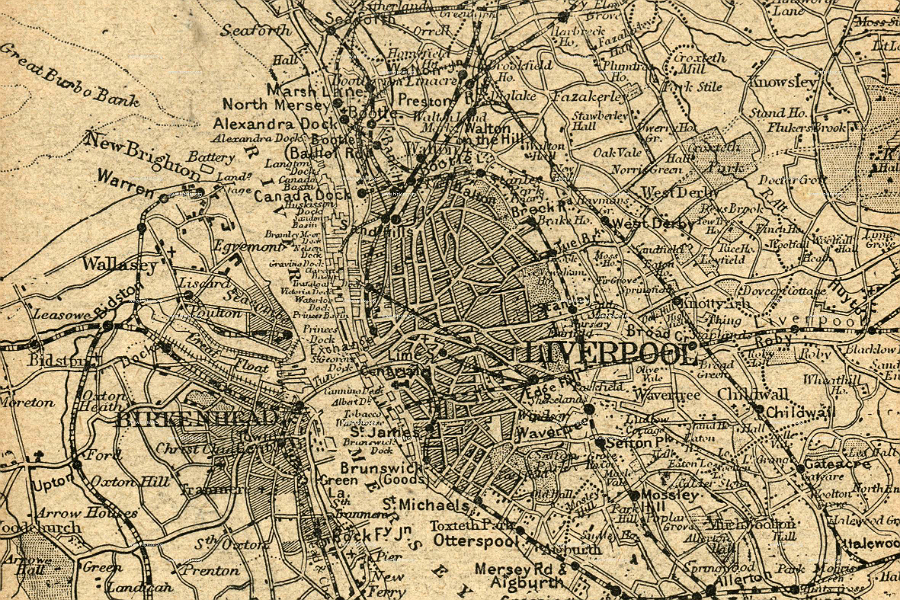No Map for This Territory

Ahead of the Bluecoat’s forthcoming exhibition entitled Topophobia, C James Fagan attempts to plot a course through the fraught landscape of the 21st century…
Where do you come from? It sounds like an innocuous question right, but it can be one full of hidden pitfalls. Take myself for example: born in a suburb of Liverpool, grew up in a town twenty miles away. Like so many of us, have lived and studied in various places in the UK. When people ask if I’m from Liverpool, I have to answer, “I’m from here but not from here”.
Which leaves me with a slight sense of displacement. I have no home but what does that mean? Where do our notions of place come from? How can we give place meaning in a realm of never-ending chain stores? We have long-since passed using geographic features or the peel of the church bells to determine the limits of our community; the borders have become more abstract, lines drawn on maps themselves an abstract representation of physical space. To now, where we are all citizens of the world, able to project ourselves telematically to any corner of the globe and beyond.
This sense of displacement is commonplace, as technologies allow us to share our local experiences more and more, blurring the boundaries between here and there; this has lead to uncertainty about the identification of place, a topophobia. This unease about place also relates to how personal identity in the 21st century is equally fluid, for the two are linked.
Physical space exists, there’s no denying that. What gives a place meaning are its links with cultural and historic occurrences. I’m not just referring to the grand movements of history but the small personal histories we carry with us. For example, round the back of the Rose and Crown in Dewsbury means nothing to you, but marks a small important moment in the history of me – the site of my first kiss.
Even so, the connections between history and place aren’t so solid, or as solid as we’d like. For we all share a parallel history, a history of mass-media. Television and films help shape and form our impressions of the world and often provide a background or anchor for your time in a certain place. In his essay The Remembered Film, Victor Burgin talks about a scene from the film A Canterbury Tale and how recalling that particular scene sets off a series of associations to the landscape of his early childhood. In the same essay he references a research project where people were asked to recount personal memories. The revelation was that these memories were somehow mixed in with the narratives of film and other mass media.
So when the meanings of place have been, as J.G Ballard put it, pre-empted by mass media, are we then left only with the supposed idea of place to fill the void? In Ballard’s writing, we often see a landscape of flyovers, industrial estates and airports, which become the stage for some form of evolution or transformation. What Ballard saw in this landscape was a set of meanings yet to be understood; we seem to forget that our contemporary concrete landscape has only existed for a very short time.
It’s worth pointing out that through his writing, his ‘home town’ of Shepperton has itself become imbued with the writers imagination, and people now tour the town in an attempt to enter into some kind of mediumistic relationship with the place. Perhaps you can see Ballard’s writing as an attempt to deal with a certain notion of topophobia, to come to terms with the bombardment of images and meaning heaped upon us in the media age.
Ballard is reported to have spent a lot of time in the departure lounge of Heathrow Airport, marvelling at how the transient nature of the space had given the people there meaning; everyone in the airport is there for one reason – to travel. Within the airport Ballard saw the possibility of becoming a ‘more advanced human being’.
Part of a vanguard of sorts, Ballard belonged to a generation which suddenly found itself faced with the psychotic pace of change that was the latter half of the 20th century. Living within this blur, artists have reacted to this change in different ways; from Laurie Anderson’s wry exploration of the issues surrounding communication technologies, to Dan Holdworth’s photographs, and even George Shaw’s paintings.
I have to consider that the sensation of topophobia rearing its head during the 21st century is linked to a very old and hardwired need in the human race to find meaning in their actions and surroundings. The flipside to this natural need is apophenia: to see meaning in random and unrelated things. This is understandable in the face of the indifference of the huge amounts of raw data we can now access.
This is the contemporary sublime; when faced with so much impersonal information, through the constant white noise, we cobble together a meaning from personal experience infused with input from mass media to create our own modular worlds, ones which in essence can interact with other people’s experiences. Or as Brian Eno more elegantly expressed it in his essay Scents and Sensibility: “I love watching us all become dilettante perfume blenders, poking inquisitive fingers through a great library of ingredients and seeing which combinations make sense for us, gathering experience – the possibility of better guesses – without certainty.”
The current imposing level of data out there provided by new media does threaten to overwhelm us, but we can come to terms with it and use it to create. We are explorers in this new land, and there are no maps for these territories; there never were, we make them up as we go.
C James Fagan
Topophobia at the Bluecoat opens Sat 3rd March and runs until 22nd April





